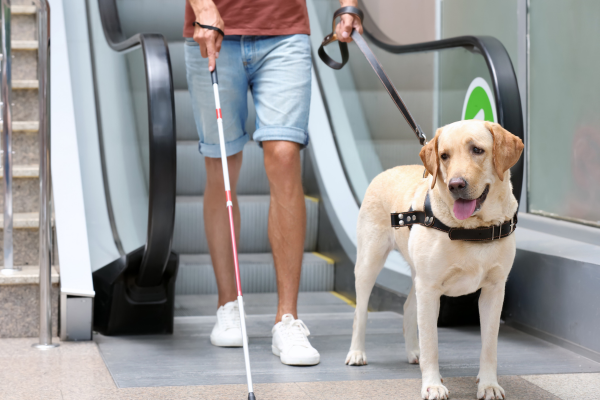Use of Service Animals in Healthcare Settings

For centuries, dogs have assisted people with disabilities to perform routine daily activities. Formalizing canine assistance began in 1916 when the German Shepherd Dog Society trained dogs to support German veterans blinded during World War I. Responding to requests from blind Americans, in 1929 US dog breeder and philanthropist Dorothy Harrison Eustis founded The Seeing Eye, the first US program to train guide dogs. For decades, with their rigid, U-shaped harnesses, Seeing Eye dogs were America’s quintessential service animals.
Today, new categories of assistance animals have appeared, such as emotional support and therapy animals. An increase in the number of service animals being used by people with various disabilities generates confusion about the roles and regulation of different types of assistance animals.
According a recent article in the Journal of the American Medical Association (JAMA) Insights, a review of the history and regulations set by the Americans with Disabilities Act (ADA) rules for patients, visitors, and individuals bringing “service animals”—the phrase used in ADA regulations, which explicitly connotes dogs trained specifically to perform certain tasks into healthcare settings found that many clinicians are unaware of these rules.
Service animal regulations fall under ADA Title II for public entities and Title III for private organizations serving the public. A 2018 survey of 441 clinicians found that although 73.1% said their facility had service animal policies, 34.9% were “not familiar at all” and 22.8% were only “slightly familiar” with these policies.
According to the article, the number of Americans using service animals is unknown, but is increasing. ADA rules require health care facilities to allow service animals to accompany handlers in public spaces, such as emergency departments, inpatient rooms, clinics, examination rooms, pharmacies, restrooms, and cafeterias. Following Centers for Disease Control and Prevention guidelines, health care settings can exclude service animals from areas that limit access due to infection control measures.
In addition to assisting the handler with specific medical and functional needs, service animals typically become integrated into all aspects of the handler’s life. Dyads have unique relationships, reflecting handlers’ personal circumstances, disability-related needs, and service animals’ individual traits.
Although rigorous studies are lacking, research suggests service animals enhance their handler’s safety, participation in daily activities, social integration, and quality of life. Challenges include expenses (eg, food, veterinary costs), workload (eg, caring for the animal), logistical difficulties integrating service animals into social and physical environments, and emotional considerations (eg, when animals become sick, can no longer work). Furthermore, people with disability often confront substantial disadvantages in social determinants of health. Poverty, housing and food insecurity, unsafe neighborhoods, inaccessible transportation, and other deprivations can harm both handlers and their service animal.